We have worked with hundreds of educators around the world who have incorporated Chibitronics into their teaching, but we have never before had an all-in-one resource to help them get started. Enter…the Paper Circuits STEAM Educator’s Guide! This 185-page guide was written with both K-12 and informal educators in mind. It includes 19 arts-integrated lesson sequences based on The Circuit Sticker Sketchbook (Part 1) and Love to Code (Part 2) as well as 6 Featured Projects showcasing unit or semester scale projects. Educators can follow the lesson sequences as-is, or recombine them to create a sequence adapted to their students.
The guide is free for teachers and learners and can be downloaded here!
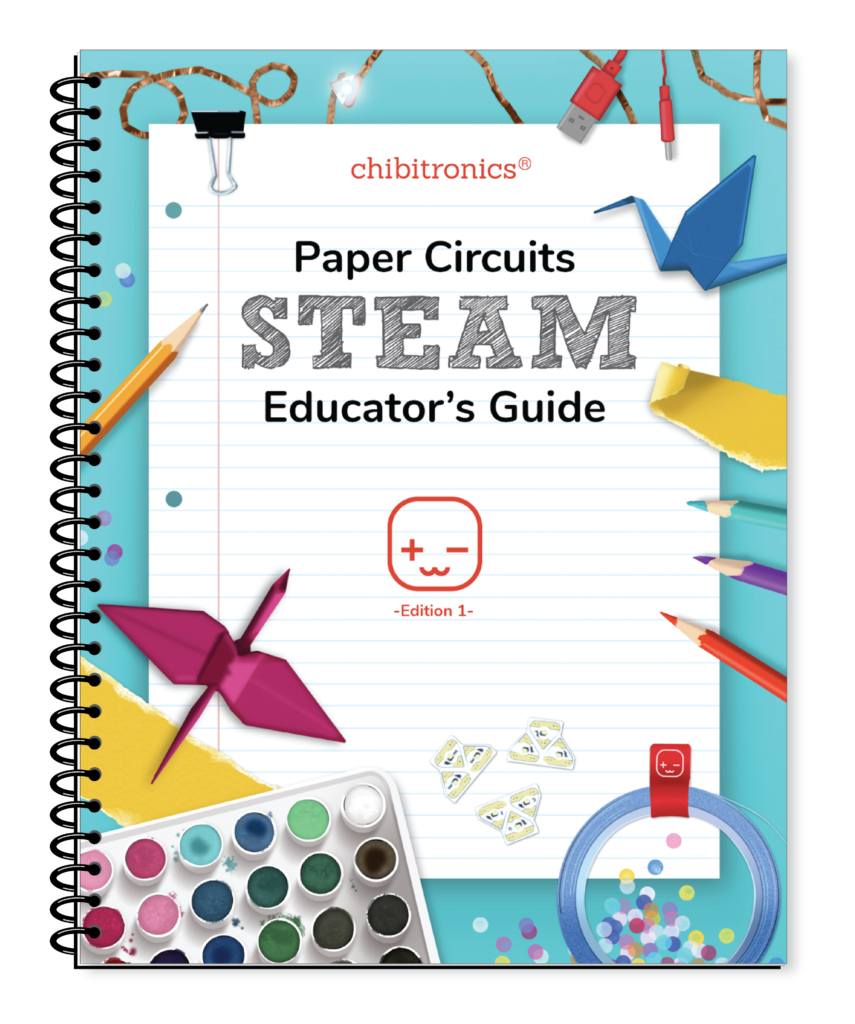
What are some of the big ideas in the guide?
The word “STEAM” in the title was very important to us! STEAM is an acronym that adds “Art” to Science, Technology, Engineering, and Math. This can refer to many different approaches, but for us, STEAM is about using STEM as a medium to ask and explore big questions in ways only possible through the arts, questions like “Who are you?” and “What do you care about?” and “What is your relationship to the world?” It’s an integrated experience with art at the core: finding meaning and connection through creating.
This approach is embedded in every part of the guide. Each lesson opens with a Start with Art activity that orients learners to exploring materials and ideas through an art lens. The lessons are not just about learning electronics, coding, or even art-making skills, but rather about applying those skills to explore questions that are meaningful to students. Through storytelling, model-making, poetry and language, material explorations, and collaboration, students build trust in the power of their own ideas and interests to help them learn and create things they care about.We believe that these creative learning experiences should be available to all students, and are aware of many of the structural barriers that make STEM learning experiences much less available to students from marginalized genders and racial backgrounds. To address this, we feature projects and creative prompts that center student identities, communities, and futures. We celebrate different different kinds of projects and make space for divergent interests, approaches, and perspectives. Our troubleshooting and collaboration guides position students as resources for each other with different perspectives and talents to share. We showcase diverse role models in the world of creative technology, and bring in these illustrations by K-Fai Steele to help shift stereotypes about who is welcome in the world of STEM.

Finally, the guide is grounded in respect for educators and their expertise: we believe teachers know their context and students best. However, we also understand that time is limited and they don’t always have time to create things from scratch! So we created specific lesson plans with a lot of room for customization. We included suggested standards but left room for teachers to choose what they might emphasize in a particular semester or activity. The idea of choices also plays out when thinking about materials; from conductive tape to LEDs, we don’t think one size fits all, and we provide information to help educators make informed decisions.
Can you give us a tour of the guide?
The guide begins with an overview and history of paper circuits, introduces key materials and techniques, then provides a scope and sequence along with grade level recommendations and suggested standards. We also include guidance on collaborative learning experiences, equitable teaching practices, troubleshooting, managing materials, and more teaching tips. For those who want to delve even deeper, we share many of our favorite reading recommendations on STEAM and maker learning.
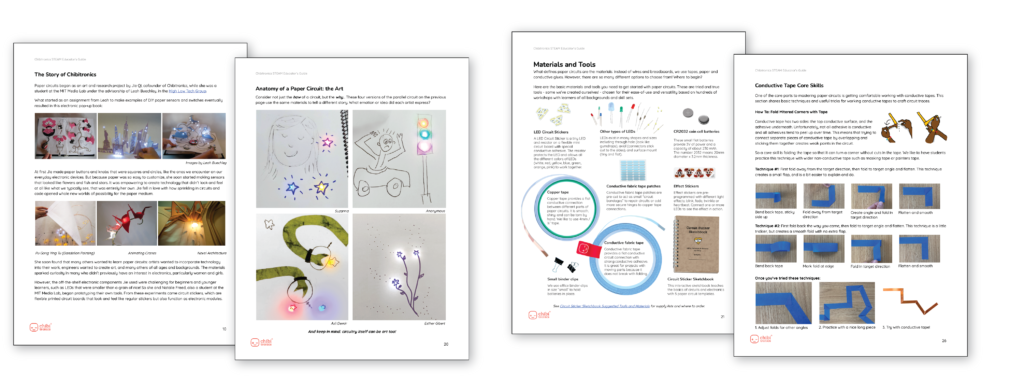
Part 1 presents a sequence of 7 lessons based on The Circuit Sticker Sketchbook, along with a bonus new animated slide switch template and a special Circuit Science lesson. Each lesson includes both technology and arts learning objectives, and guides learners in using paper circuits materials and techniques for meaningful creative expression – from using circuit traces as an expressive element to using light and shadow “reveals” to tell an interactive story. Printable templates for each activity are included in the appendix.
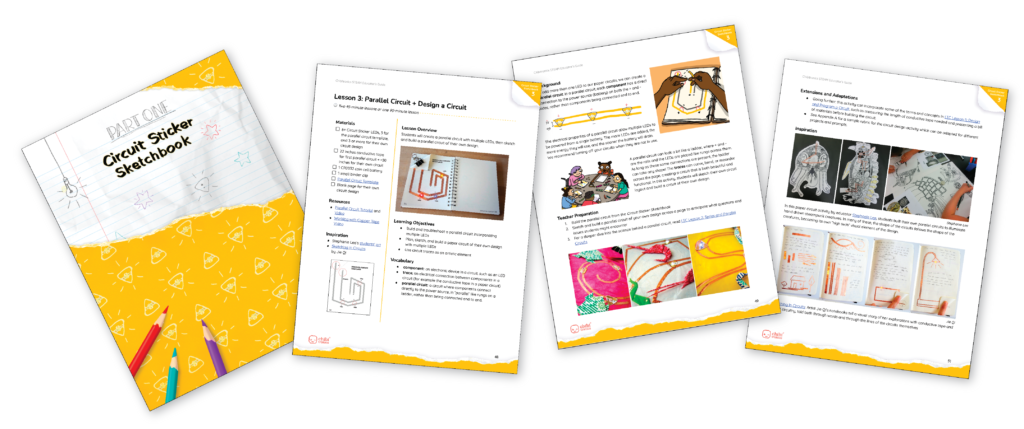
Part 2, Love to Code, adds interactivity and creative coding! A 12 lesson sequence based on Love to Code Volume I and the Light Sensor chapter builds coding skills with the Chibi Chip microcontroller while taking learners on a creative journey through visual art, performance art, sculpture, and poetry. Learners will explore art that responds to an audience or the environment, create narratives and evoke emotion through light effects, use models to communicate ideas and stories, and more.
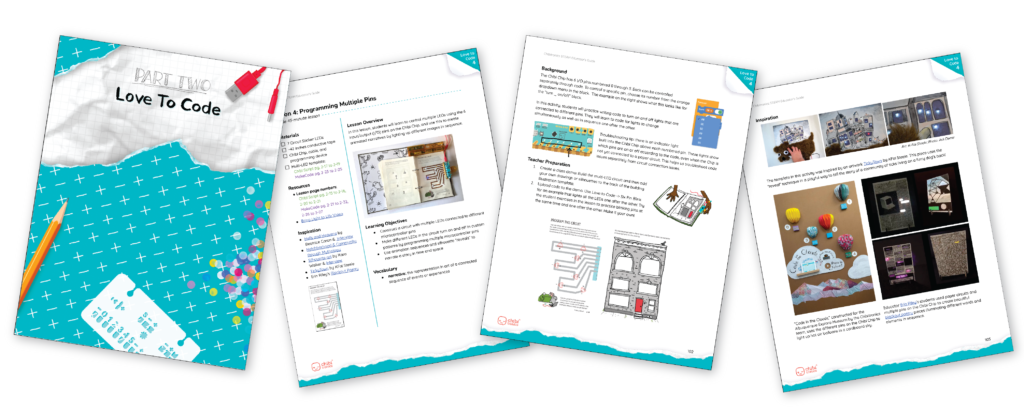
Throughout the guide, we share inspiration in the form of Featured Artists, Educators, and Techniques, including Shiela Lee’s identity portraits, Neta Bomani’s zines, paper engineering, and collage.
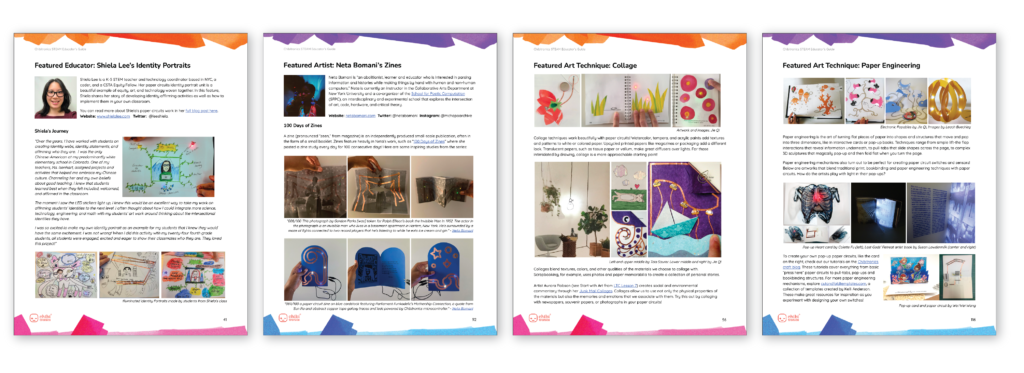
Finally, the Featured Projects section features some of our favorite “tried and true” projects that we have taught in classrooms and during workshops. They blend skills and topics covered throughout the guide and are designed to be open-ended so that educators can adapt the projects to many subjects and themes.
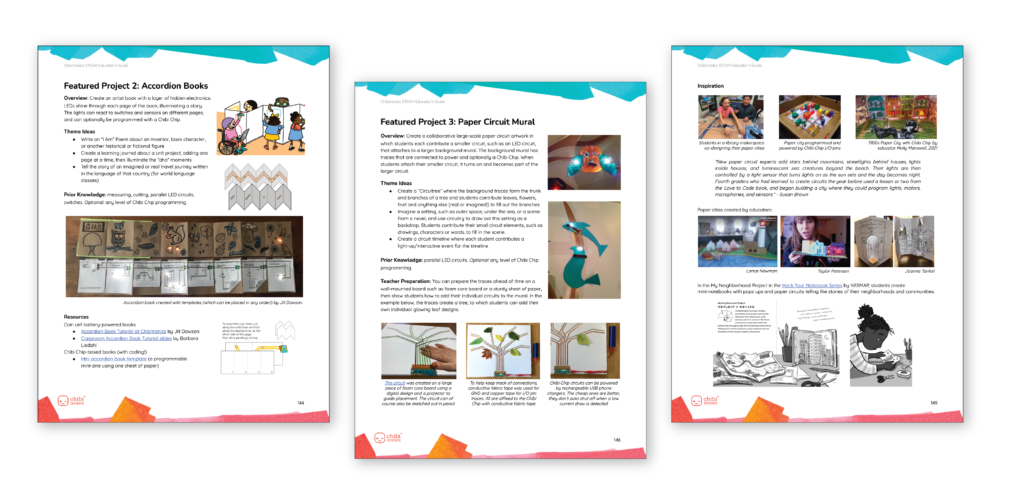
Who wrote the guide?
We would like to extend a huge thank you to everyone who helped create the guide, including the many inspiring artists and educators whose work is showcased throughout, the Chibitronics Educator Ambassadors who shared words of wisdom and suggested learning standards, and everyone who generously provided feedback.
Credits
Authors: Natalie Freed and Jie Qi
Illustration: K-Fai Steele
Editors: Susan Brown and Jill Dawson
Cover and Graphic Design: Emma Freed
We would love to hear how you use the guide! Feedback is also very welcome so that we can make the next edition even better. Please drop us a note at education@chibitronics.com!
